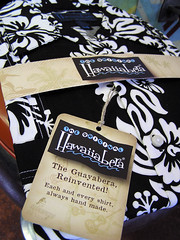The Benefits of Living Above the Store
By Suzanne Hamlin NYT
There are very few ways to outwit the market and find a bargain.
But for those people who are adventurous and willing to look at buildings that don't fall into their preconceived ideas of residential space, there is a frontier, maybe the last one: the mixed use building, legally designated as part commercial and part residential.
Brokers say they are seeing intense interest in them from people who previously might have wanted only purely residential property. In some cases, the buyers are looking for places to both live and work. In others, the interest is driven by money, or rather the lack thereof.
As prices for apartments and brownstones zoom ever upward, mixed-use space is becoming more appealing. It often costs less per square foot, and a commercial tenant can provide rent to cover much of the mortgage.
"It's like the floodgates have opened," said Jackie Lew, a broker with the Corcoran Group in Brooklyn.
She said that she has had more calls about a recently listed mixed-use building on Third Avenue in Carroll Gardens, Brooklyn, for $650,000, than on any other property in the last several years. Quite quickly, the building was bought by a dentist who plans to have his office there and rent out the apartments above.
But many prospective buyers of mixed-use property are young and not-so-young professionals who want living space in the popular Brooklyn and Manhattan neighborhoods that appeal to them for their schools, green space, transportation and shopping.
The greatest number of mixed-use buildings in New York are on big commercial strips, often in what would be considered fringe residential neighborhoods in Brooklyn, Queens and the Bronx. For those craving space and not fearful of living without a Starbucks within walking distance, these can be a great deal.
But even in more affluent neighborhoods, mixed-use buildings can be found, usually less expensive by a third or more than fully residential buildings. If the commercial space is not used by the owner, there is the potential for income from a tenant who will probably never give wild parties, or call the landlord in the middle of the night because of a clogged sink.
Another plus for many is that unlike most residential buildings, mixed-use properties often come with the legal right to build up or extend out in back. And for many mixed-use buyers, the buildings' lack of architectural detail or character is a good thing; owners can rip out and reconfigure at will. As for the usual lack of a yard, roof gardens and decks are compensation.
Over the last 29 years, Sue and Joel Wolfe have experienced the benefits of owning a mixed-use building. When they bought a three-story building on Atlantic Avenue in Brooklyn in 1975, they had no intention of living there; they already had a two-family brick house in Fort Greene.
But, "Joel wanted to open a restaurant," said Ms. Wolfe, who at the time was a merchandising executive and is now a real estate broker.
The 4,425-square-foot Atlantic Avenue building, between Nevins and Bond Streets, cost $38,000 in 1978, about a third of the total cost of renovations needed to create a ground-floor restaurant for Mr. Wolfe and upstairs, a spacious duplex and landscaped deck.
The upstairs duplex, meant originally as a rental, almost immediately became home for the Wolfes and their daughter, Lissa. "It didn't take long to figure out that if we were ever going to see Joel, we had to live in the building," Ms. Wolfe said.
The building, valued at around $1.4 million in today's market, looks right at home now in a tree-shaded block of clothing boutiques, art galleries, antique stores, a yoga studio, a garden center and restaurants.
Development plans for making Atlantic Avenue a three-mile grand boulevard, beginning with a riverside park and ending at a Frank Gehry-designed basketball stadium and shopping complex, are well under way.
But the Atlantic Avenue of 30 years ago was desolate, treeless and heavily traveled, a main thoroughfare for people on their way to somewhere else. Mr. Wolfe's restaurant, Restaurant Lisanne, was surrounded by manufacturing plants, wire-fence parking lots and low, anonymous storefront buildings.
It was considered a good restaurant, but even residents in Brooklyn Heights, less than a mile away, would not go there casually. Boerum Hill, the neighborhood directly behind the restaurant, where brownstones needing work now start at $1.5 million, was known locally as crack city, and best to be assiduously avoided after dark.
For the Wolfes, shopping for essentials was a long hike or a car trip, and casual neighborhood social life was nonexistent.
When Mr. Wolfe retired and closed Restaurant Lisanne in 1989, the space on the ground floor was rented to Cheryl Kleinman, the baker who has become well known not only for her wedding cakes and pastries but also for her celebrity clientele. It is a commercial kitchen, not a walk-in shop, and the Wolfes say they feel blessed to absorb so many seductive aromas without ingesting any calories.
Having a commercial tenant is like having a residential tenant except that in a commercial space, when there is a negotiated net income lease, the tenant pays a share of the building's taxes, as well as utilities and garbage pickup.
But there are downsides, and challenges, that buyers may not understand when they first start looking at mixed-use buildings. Ms. Lew, the broker, said those considering mixed-use property for the first time often don't know that the down payment is at least 25 percent of the purchase price.
This can be a substantial cash outlay, far greater than the average 10 percent down payment fairly standard now on residential properties purchased by buyers with large incomes who are considered good risks by mortgage lenders.
Banks consider that a mixed-use building, particularly for a live-work owner, carries a double risk. If a commercial business goes under, the odds of losing the house become greater. All eggs in one basket sets bankers' teeth on edge.
Traditionally, immigrants have been the most avid buyers of small live-work buildings. Chinatown and the Lower East Side remain vibrant examples, and recent immigrants also see this route as a way up, not down.
Eli Ickovic, a Corcoran broker who was born in Israel and is fluent in several languages, cited one of his clients, a woman from Poland, who moved here three years ago and bought a rental property in Sunset Park and then a mixed-use building in Park Slope. In contract now for those buildings, she is about to close on a mixed-use building on Atlantic Avenue that provides more income in a better location. Her teenage daughter and an older relative will move into an apartment in the building with her.
It's a scenario that still dumbfounds many Americans who can't figure how they can have good jobs and decent salaries and still not save a dime.
Hard work — very hard work — and a willingness to live in less-than-ideal quarters are the short answer. "Real estate is still the key to being able to afford to live here and achieve financial success," said Timothy D. King, the executive managing director of the Brooklyn office of Massey Knakal Realty Services, a commercial real estate firm with extensive listings across the city.
Nodding at the affable young Russian who was working as a technician and adjusting the interagency plasma TV screens, Mr. King said, "Trust me, with his kind of work ethic and intelligence, he's going to be a property owner soon."
People who understand the financial benefits often find the mixed-use route very compelling. One woman who is a stock market analyst for a Wall Street broker bought a mixed-use building in Prospect Heights, Brooklyn, last year using money that might otherwise have gone into the stocks. "It's no secret," she said, "that a shrewd real estate investment is going to give a greater long-run return than the stock market."
Requesting anonymity for fear of biting the hand that feeds her, she said she has come to enjoy her new living situation. The deli downstairs is not only one-stop shopping, it's security. "As a single woman, it makes me feel safe knowing that they are there all day," she said.
But there is a sense that well-off people more appropriately choose to live in fancy co-ops. "My parents are probably turning over in their graves," she said. "Live above the store? That's what they did, so I could get my M.B.A. and get out."
Subscribe to:
Post Comments (Atom)





























































No comments:
Post a Comment